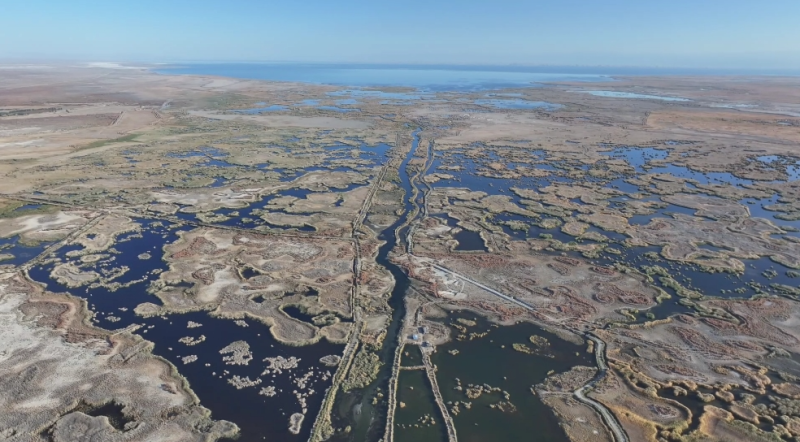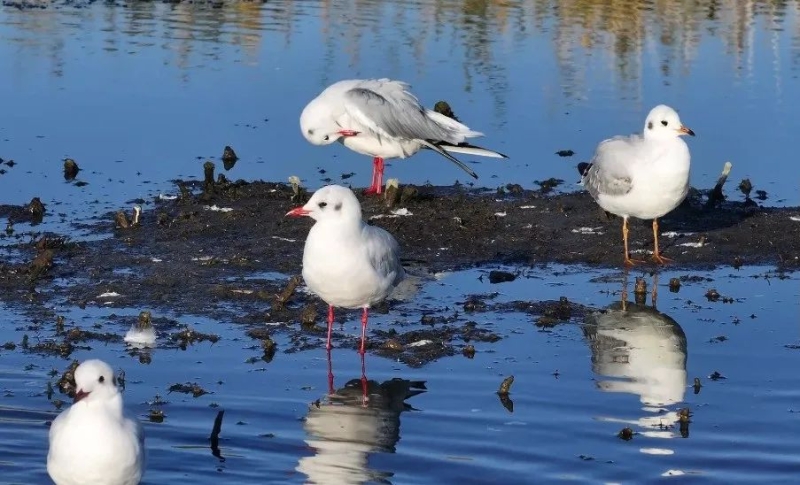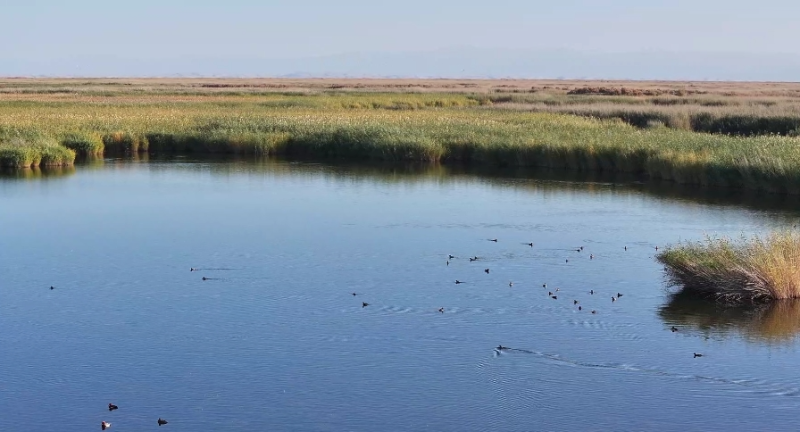Recently, with the arrival of cold air, the Longju Wetland in Heshuo County, Bayingolin Mongolian Autonomous Prefecture, northwest China’s Xinjiang Uygur Autonomous Region, has welcomed groups of wintering migratory birds, becoming a beautiful scene in winter.

In the Longju Wetland, on the water surface and in the reed marshes, birds such as herons, egrets, grey cranes, and wild ducks dance in the warm sun, sing in the air, or forage leisurely, presenting a beautiful scene of harmonious coexistence between human and nature.

The Longju Wetland in Heshuo County covers an area of over 1,400 hectares and maintains a relatively complete natural state and biodiversity. It is an important habitat for the survival of aquatic animals and plants, as well as for the migration, wintering, and breeding of various wild birds. The wetland mainly includes 34 species of wild birds, including black stork, a bird species under first-class national protection in China, the national second-class protected animals like heron, egret, gray crane, pelecanus philippensis, swan, and gadwall, as well as a national third-class protected animal, the Chinese mitten. Every year at this time, a large number of migratory birds migrate here to breed.

In recent years, Heshuo County has taken wetland protection as its purpose and gradually improved and enriched the ecological function and biodiversity of wetlands through biological measures such as wetland vegetation restoration and reed rejuvenation, ensuring the coordinated development of the regional economy and ecological environment. At present, there are 5326.67 hectares of river wetlands, lake wetlands, and artificial wetlands in Heshuo County, including 906.67 hectares of river wetlands, 773.33 hectares of lake wetlands, 1,960 hectares of swamp wetlands, and 1,686.67 hectares of artificial wetlands.
(The Convergence Media Center of Heshuo County, Reporters: Daoerli, Jiayabatu, Chen Haoran)









